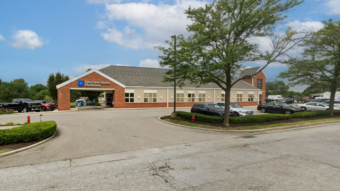One of the fastest growing segments in real estate has been senior housing, a diverse asset class that can deliver more property types than perhaps some people realize.
That’s why 120 industry professionals recently attended the 11th Annual Chicago Senior Housing Real Estate Conference. Two panels dove into the state of the market, current design trends, financing options and a variety of other topics.
George Mesires, partner at Faegre Baker Daniels, moderated the first panel discussion. Joining him were Douglas Antonio, partner, Sugar Felsenthal Grais & Helsinger LLP; Douglas Kimes, senior vice president, national director of healthcare, TCF Commercial Banking; Joe Pecoraro, project executive, partner, Skender; Ben Seager, AIA, LEED AP, director, design, KTGY and Chris Tritsis, senior managing director, Baker Tilly.
According to Kimes, the senior housing sector is growing so fast that some markets are falling six to eight months behind in development deliveries. In terms of investor interest, there are a few saturated markets, but overall there remains strong demand.
“I see a lot of sales. Most of my clients are selling right now but there are a lot of people buying,” Kimes said. “Particularly on deals that have section 8 subsidies. There is money out there chasing these deals.”
The design of senior housing has changed dramatically over the past decade. There has been a surge of high-end, concierge-grade new construction that can command high rents. But there is still strong demand for more affordable housing options, as well as long-term nursing care and rehabilitation facilities.
Regardless of the end product, keeping a new-build project or a redevelopment on time and under budget begins with communication among all the various teams involved.
“Early planning is key. A good plan equals good success,” said Pecoraro. “When you can get a design team and contractor together early, it allows the subs to line up appropriately.”
Tritsis stayed on the dais to moderate the second panel discussion. Joining him were Kevin Carden, senior vice president, acquisitions, REDICO and American House; Jeffrey Gardner, managing director, SunTrust Bank; Suzanne Koenig, president and founder, SAK Management Services and David Watkins, partner, SHA Capital Partners.
The panelists all agreed that when it comes to senior housing, large REITS are almost exclusively chasing low-risk, Class A assets. That leaves a lot of value-add assets out there for other investors.
When it comes to financing, private debt is available for quality operators. Fannie Mae and Freddie Mac are good options as well, with rates in the low-4s. HUD only makes sense for owners and operators willing to hold the property for 30 years, but even then, the prerequisites and reporting standards are too onerous for most.
“There is plenty of debt capital that is available. I don’t foresee that changing in near term,” Carden said. “What we do see is, for new construction, lenders are more discerning with who they lend to—both developers and operators. There are projects that have stumbled, usually because they used experimental lending practices or inexperienced operators.”
Koenig pointed out that, even as the country was crawling out of the recession occupancy levels at senior housing facilities remained high. “Everyone is born and everyone dies and there’s always something in between,” Koenig said.
Though the asset class is more resilient and recession-proof than others, it may not be for everyone. Years of real estate experience aren’t enough without focusing on the operations side of the business. Senior housing is a multifamily-medical-hospitality hybrid that needs need skilled nursing, costly equipment and other considerations in place if a particular property is to succeed.



